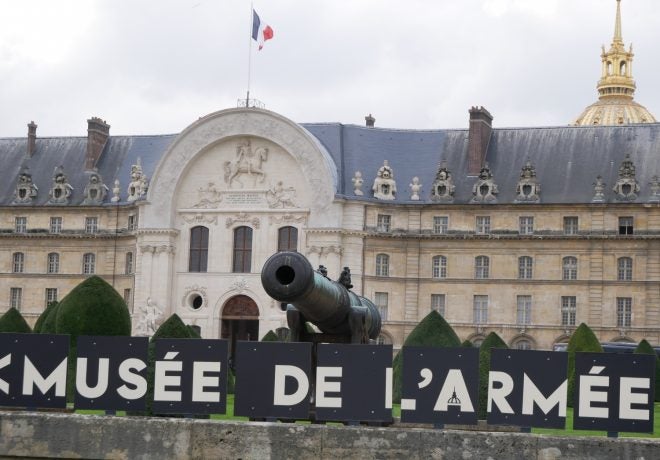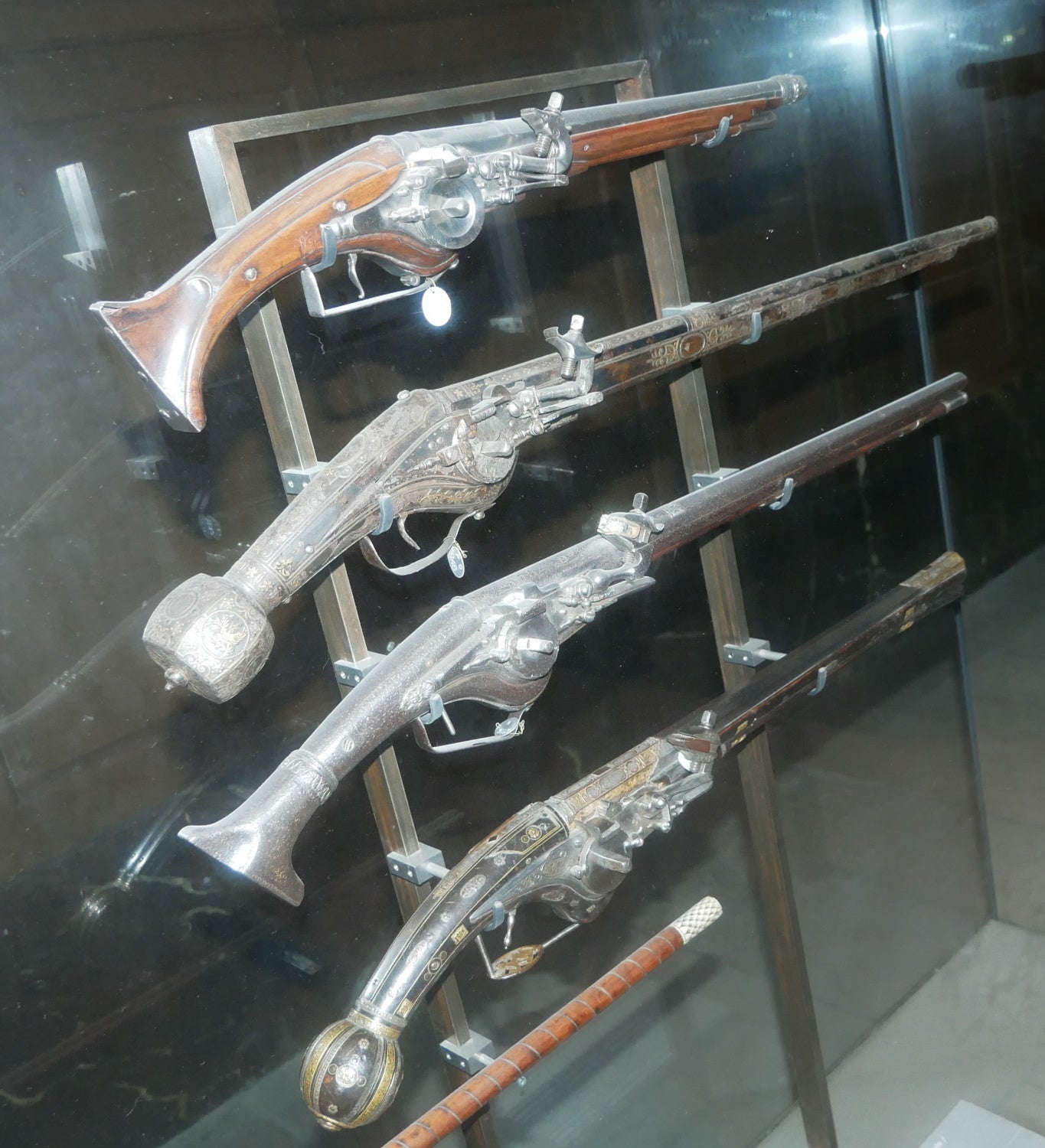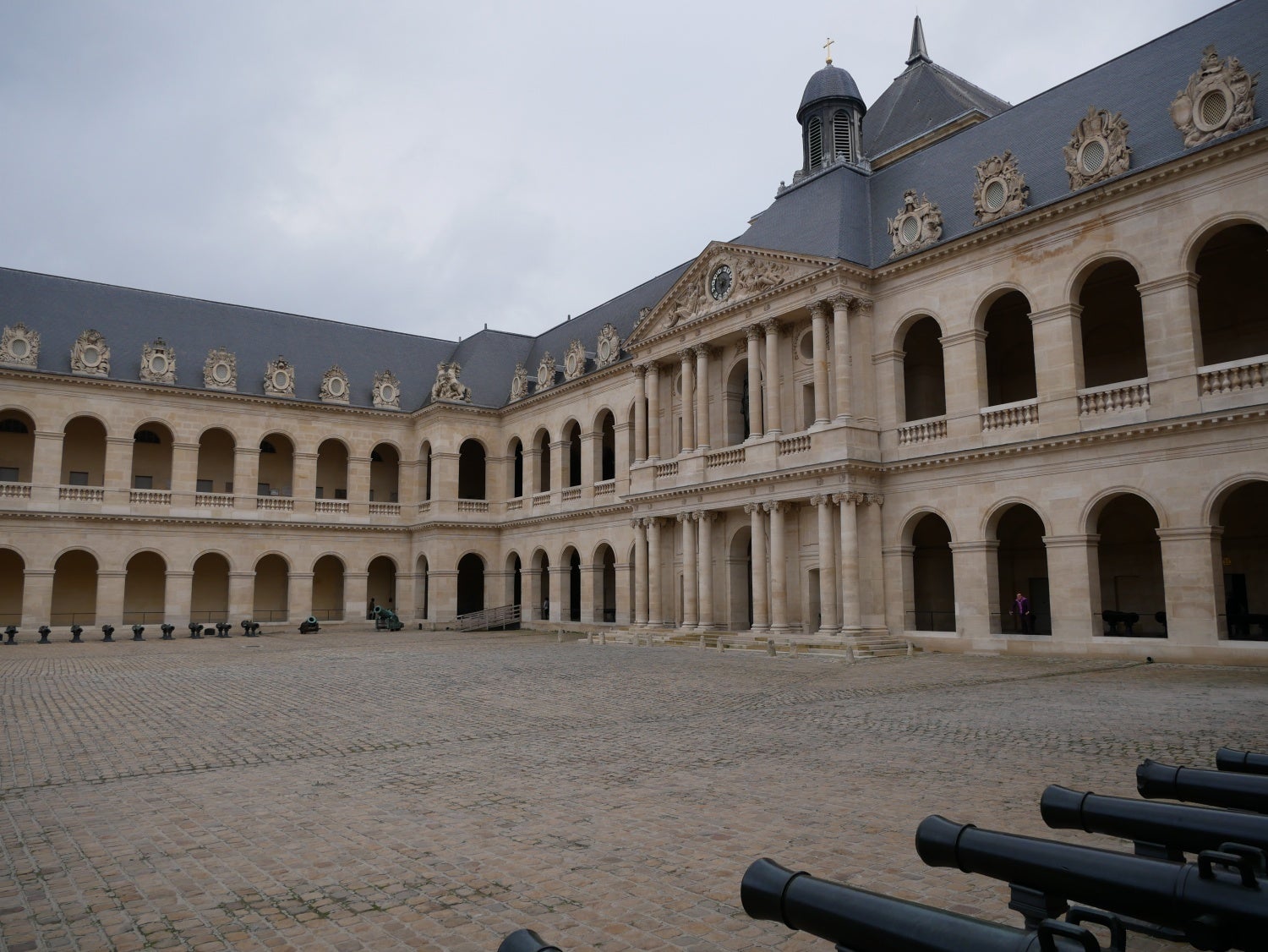The Musée de l’Armée (Army Museum) in Paris houses an excellent display of European medieval small arms, showing a wide array of early firearms design. Apart from this collection, the museum is itself a fascinating portrayal of the French Armed Forces, from the times of antiquity to the current. While I was there, they had an entire hall devoted to the modern French soldier in the 21st Century and French soldiers throughout the ages. The museum itself is a bit of history, being over a century years old with an origin in 1905 when the Musée d’Artillerie (founded after the French Revolution) was combined with the Musée Historique de l’Armée. It is housed in a massive nineteenth-century complex walking distance from the Eiffel Tower that is more akin to a palace than a museum. There are two entrances, a sort of frontal one with a grand walkway and a rear one that lets you into the Hôtel des Invalides, or the Chapel of Veterans. Fun fact, Napoleon’s tomb is located in there if you want to see that before the beginning of the visit.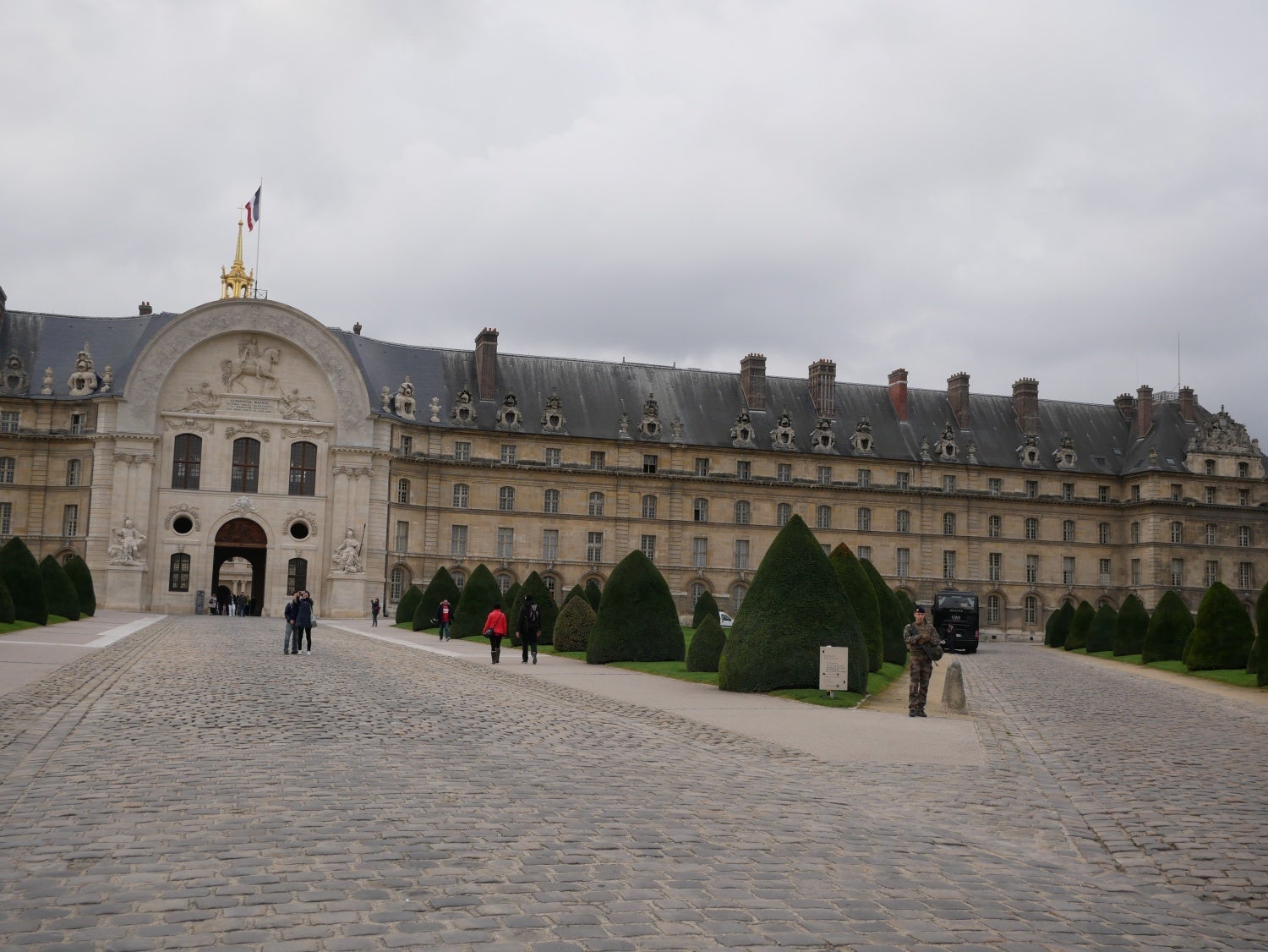
There is a security checkpoint at either end where you’ll have to show the contents of your bag and get waned. At the front entrance is a French soldier at his post, standing guard with a FAMAS. I’m kicking myself for not taking this photograph earlier because the guy who this one relieved had a yellow chamber flag inserted.
You have to pay to play at the Musée de l’Armée, the damage is 12 Euro. For days with long lines or busy in general, you can pay online and skip the main line, but otherwise, it is very simple to just pay for the exhibits you want to see at the front desk. If you are in the service of the armed forces of any country, make sure to bring a military ID card to get a veteran’s discount at the front. Due to time constraints, I was only able to see the displays of arms and armor from the medieval ages and not such exhibits of other time periods. But either way, even with the 12 Euro admission fee, I’d highly recommend checking the museum out if you are in Paris. I wouldn’t go out of my way for it, but if it could become a stop on the tour, go for it.
Now, I’m not terribly knowledgeable about small arms pre-1800s with the exception of the Ferguson breechloader. But I suggest you take these photographs in the same way I did. If you look at small arms design throughout the ages, the more things change, the more they actually stay the same as the old adage goes. Essentially at the core what we are researching and examining is that throughout time, small arms designers have been faced with the same challenges no matter the level of technology they were working with or era they were in. Questions of rates of fire, weight, concealability, reloading speeds, secondary uses of a weapon. Even how to make something elaborate and beautiful, maybe even as a miniature. So even if you are like me and don’t actually have a knowledge base for the medieval pieces on display, I’m sure you can still respect where the designers were coming from.
As a perfect example, what I found interesting about these different wheellock handguns was the design of the grips with the different ends. What appears to be happening is that makers are trying to figure out ways to use the weapon as a club when engaged in hand to hand combat. Essentially trying to hit someone over the head with it. Or on the other hand, these are simply ornate ends for the handgun because as we’ll see in more photographs, in this era small arms were more or less a luxury item until they could become mass produced. For all of these examples there certainly is a scale of utmost luxury and then of efficient utility of which all of these small arms fall somewhere in between.
We tend to think the idea of rapid fire mechanisms began with flintlocks or even percussion. This is a multi-loaded wheellock rifle with dual triggers, one for each charge.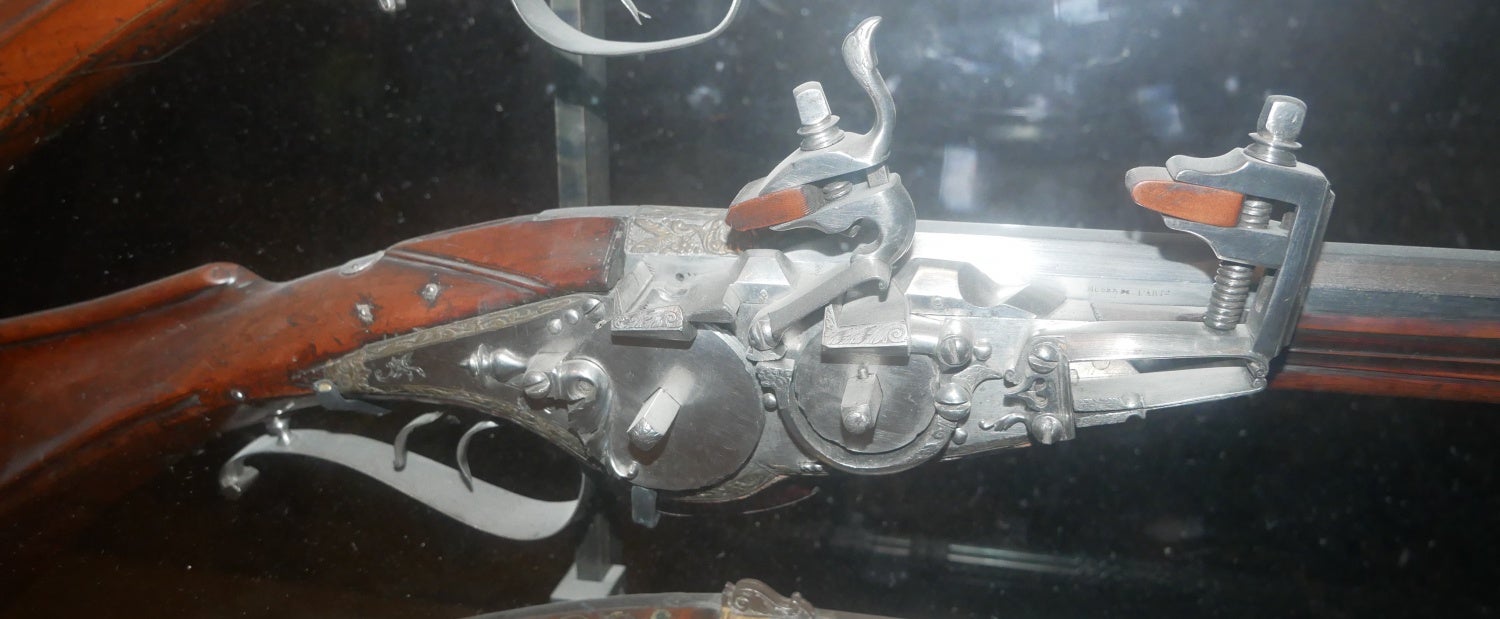
Displays have titles in French, English, German, and Spanish. But descriptions are in French.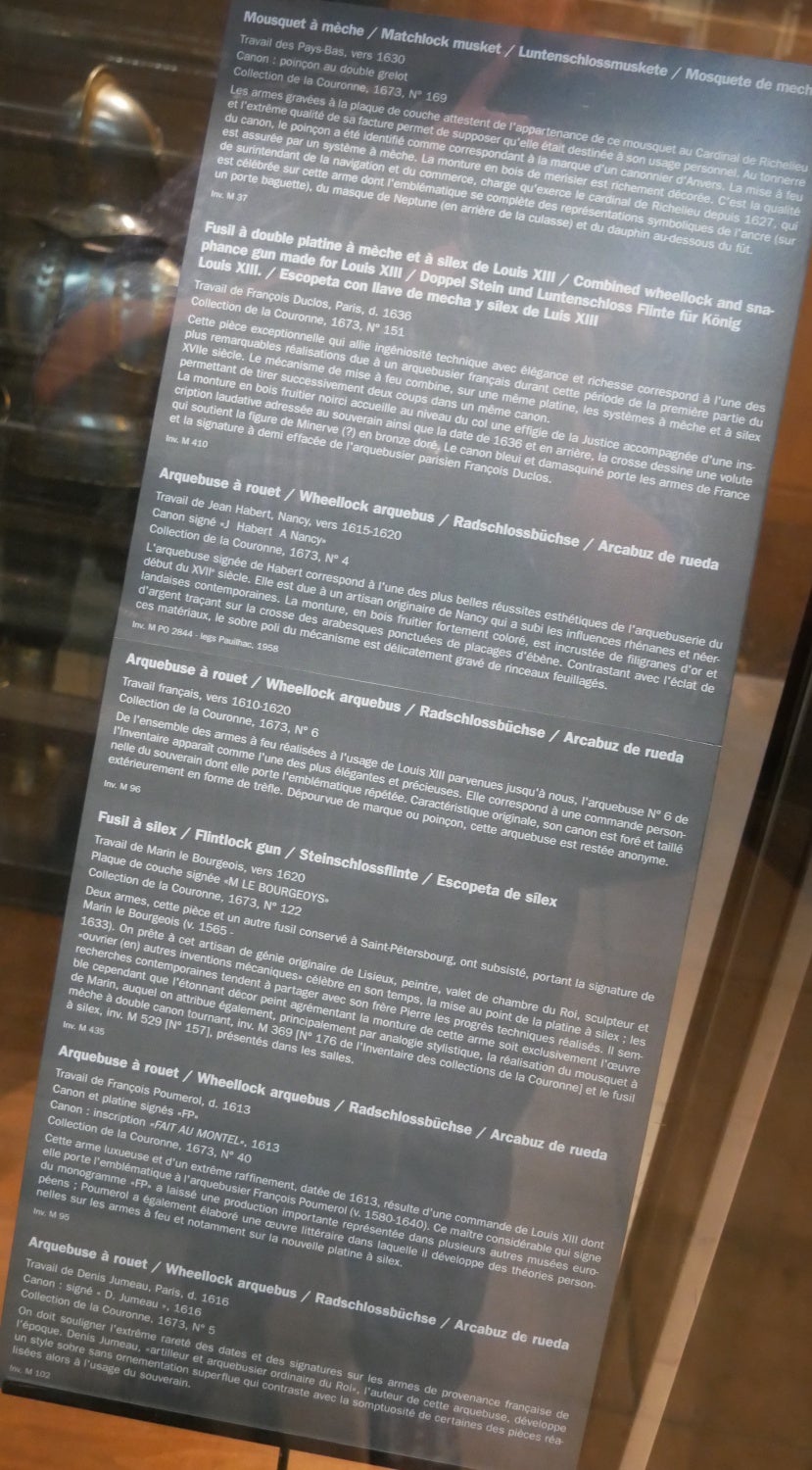
This example is a matchlock 8 shot cylinder musket, most likely from the 1500s or 1600s. How is that for a rate of fire?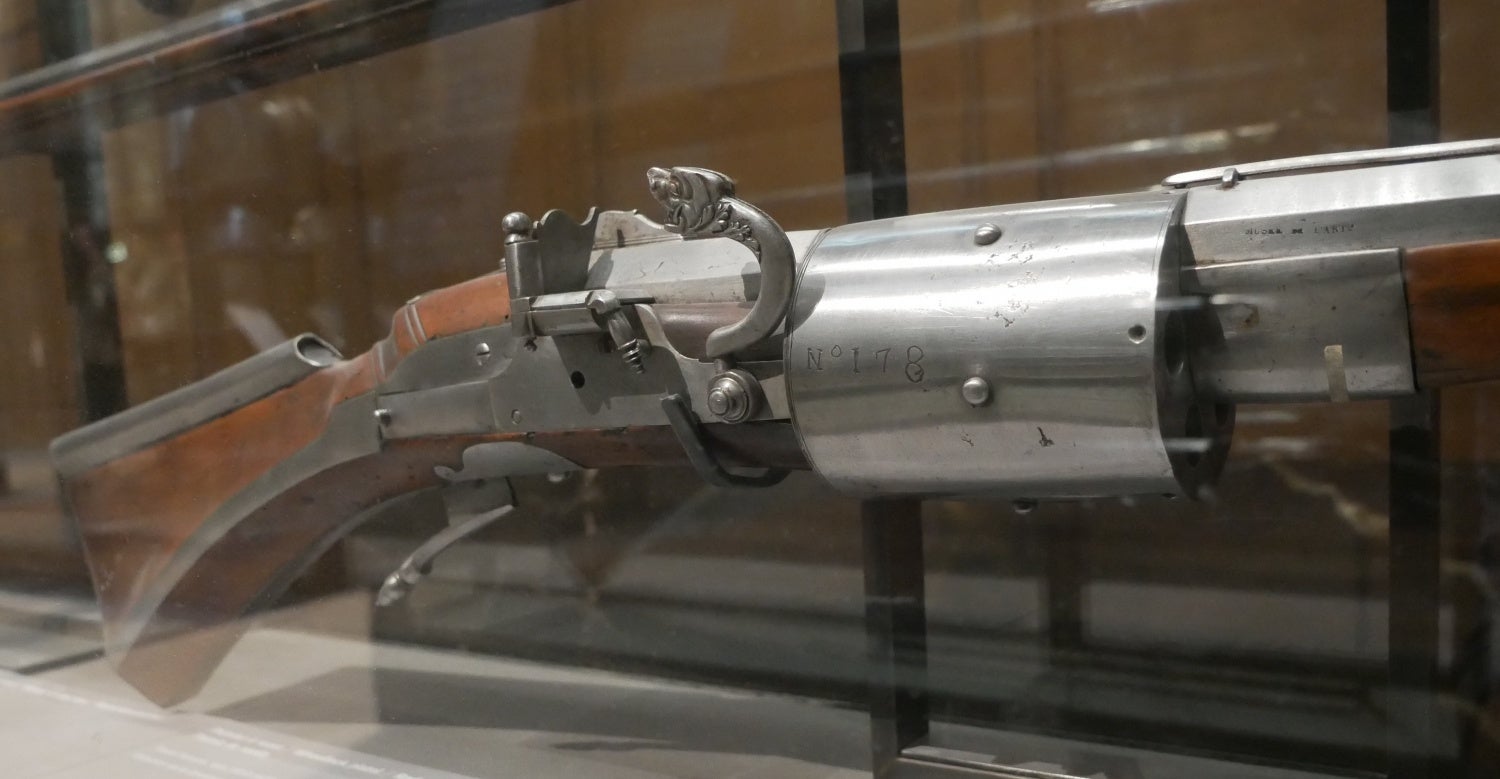
Another answer was of course the idea of three barrels. I’m not sure how the middle one would fire, maybe it could be alternated with the other two.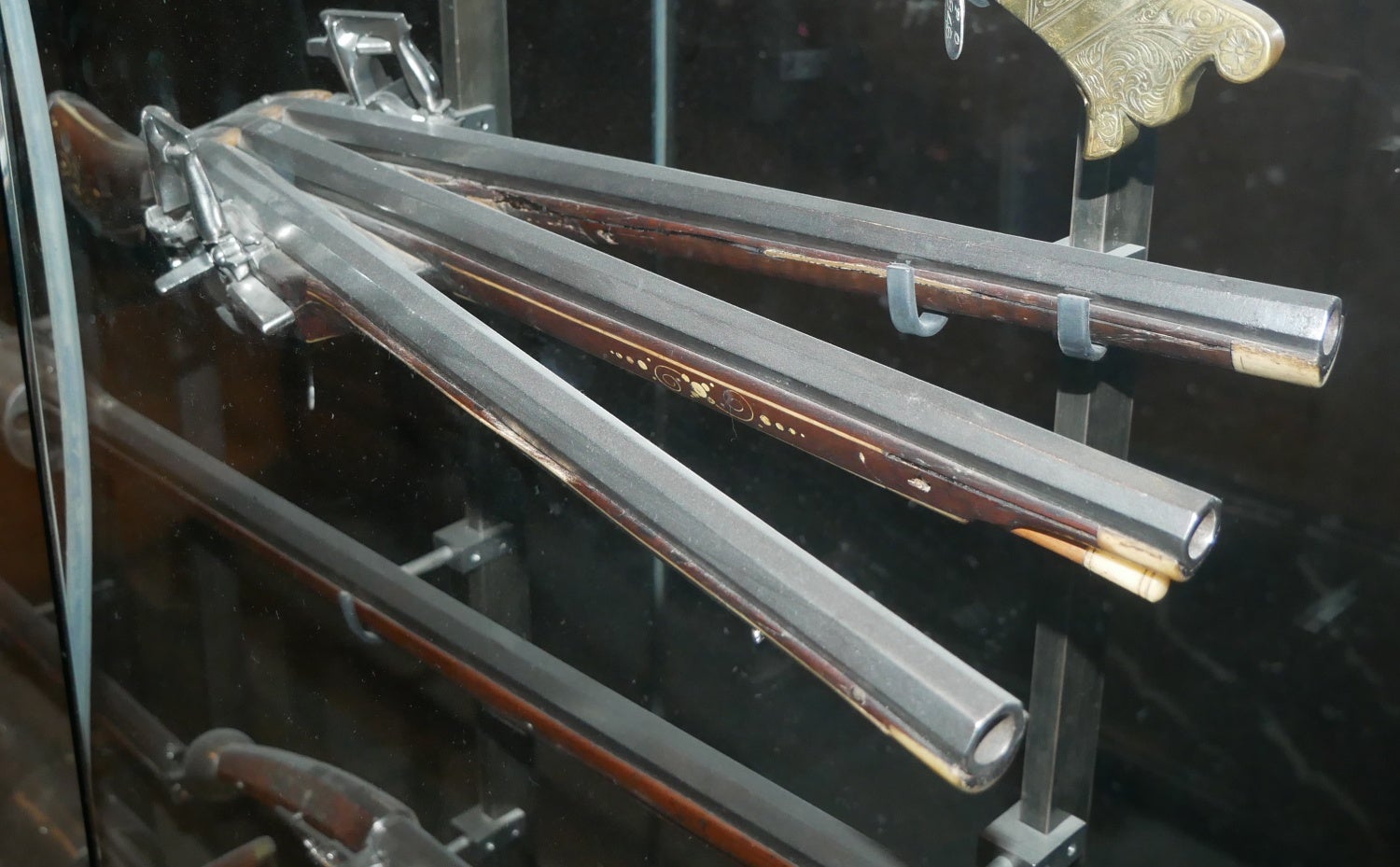
Notice the smaller caliber of the rifle above the bottom one, probably for small game or simply target practice. The bottom one is most likely .50 or larger.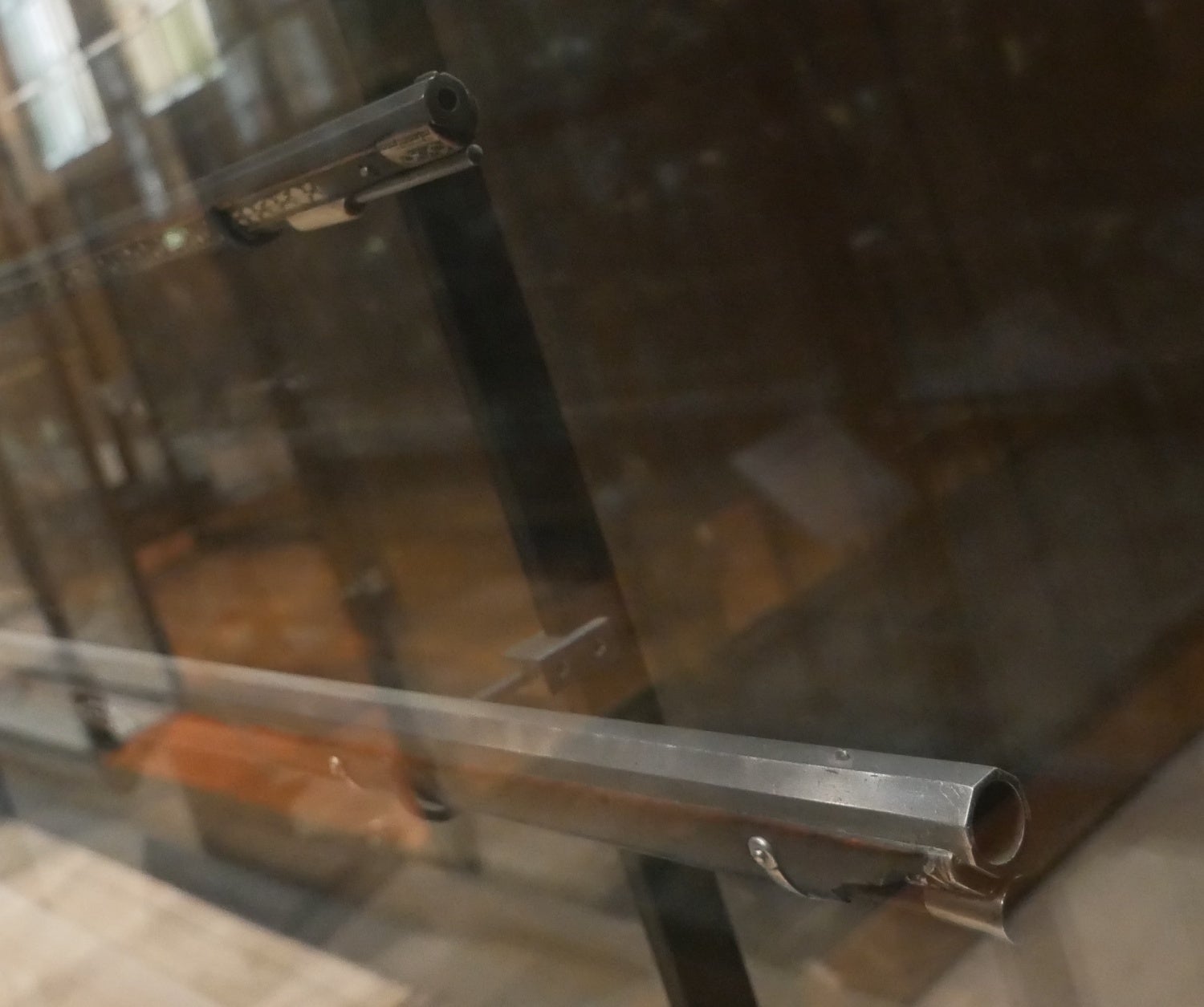
I was very preplexed with the blade/stock on this one. It might have been designed to be shot with armor on, or literally anything other than the human shoulder.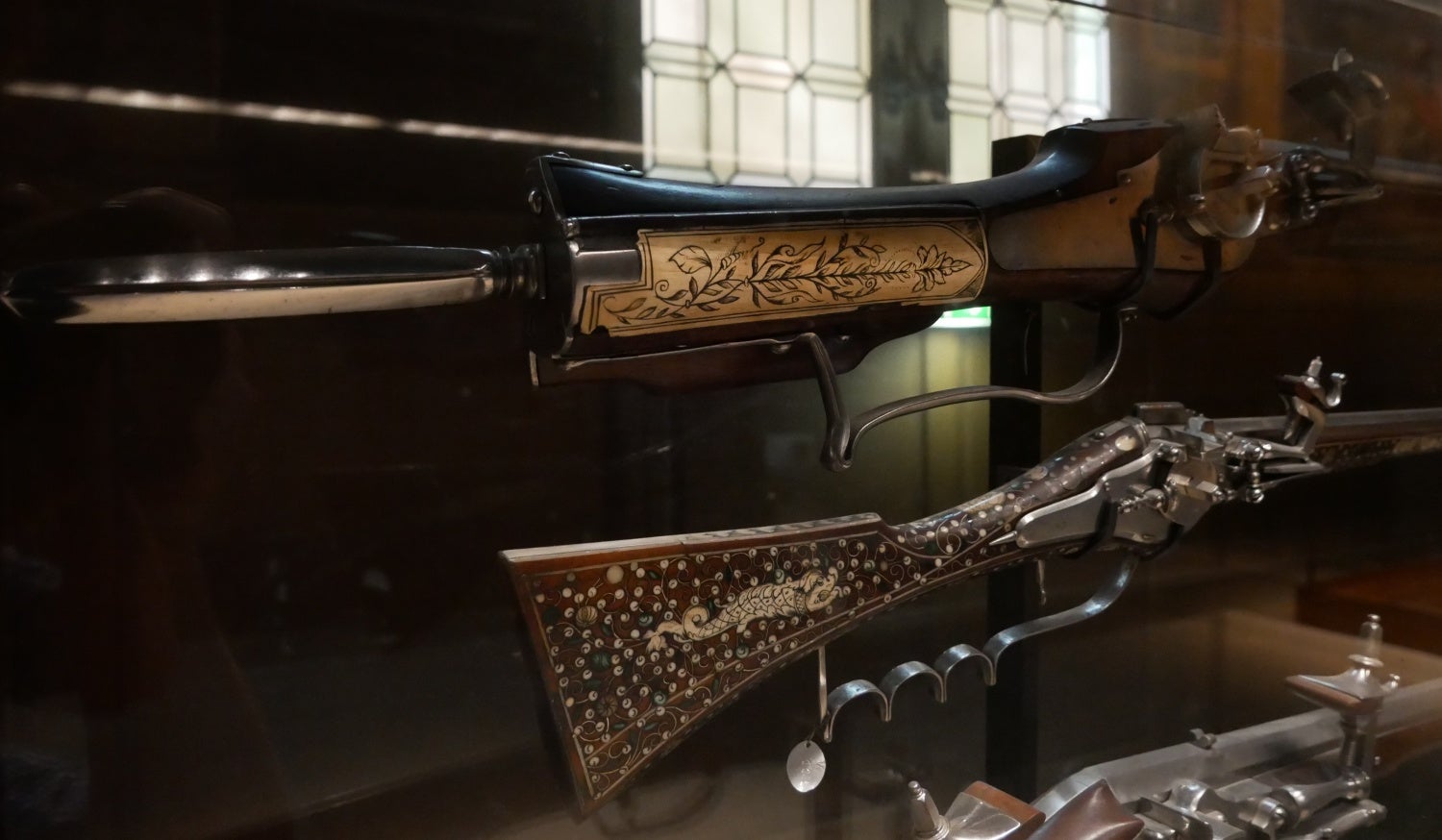
Notice the further back we go in time, the more curved the stocks become, until sometimes we almost have this right angle of a rifle stock.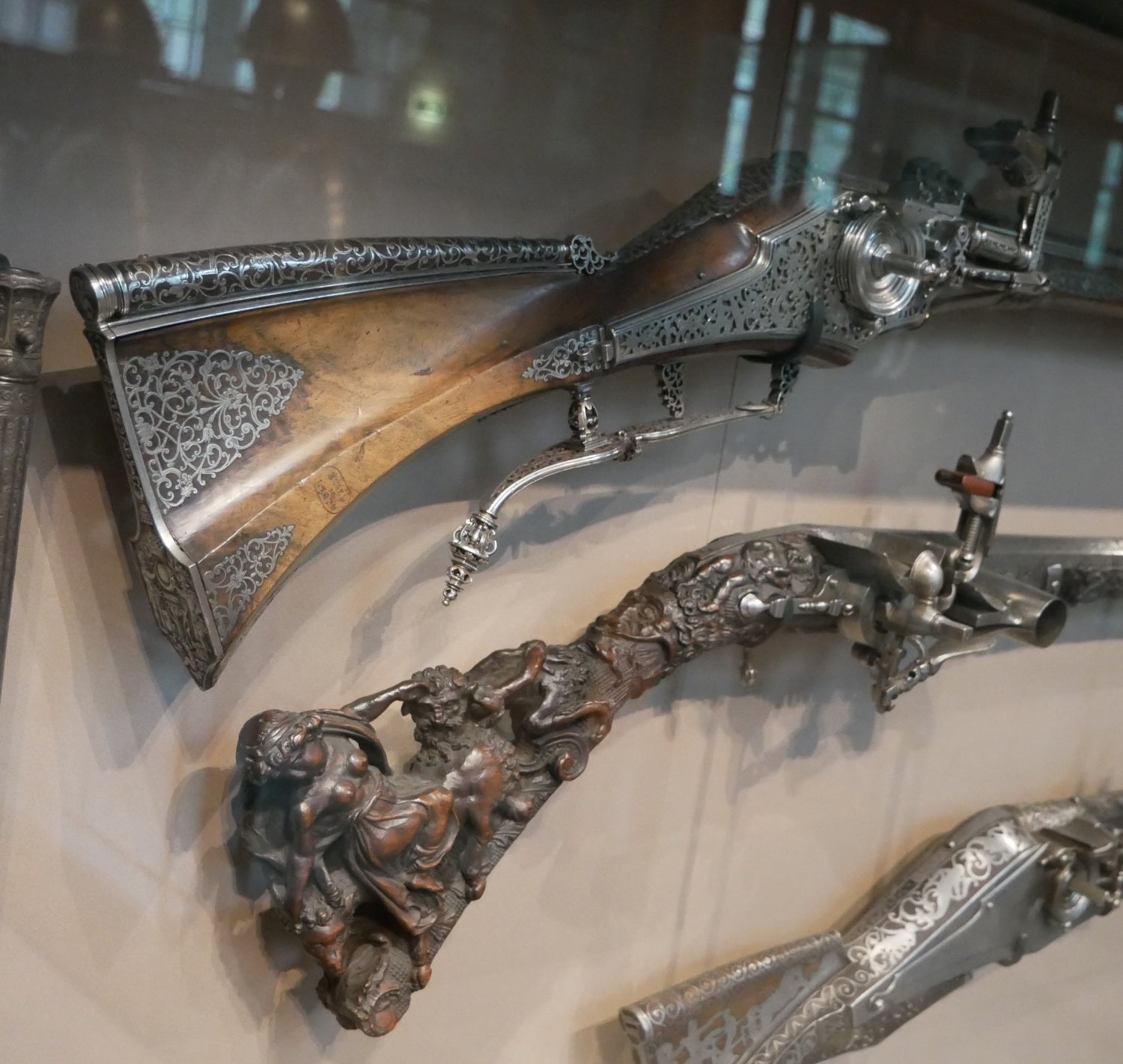
A number of these stocks appear to have this sort of container on top of the stock, or could it be a cheek piece?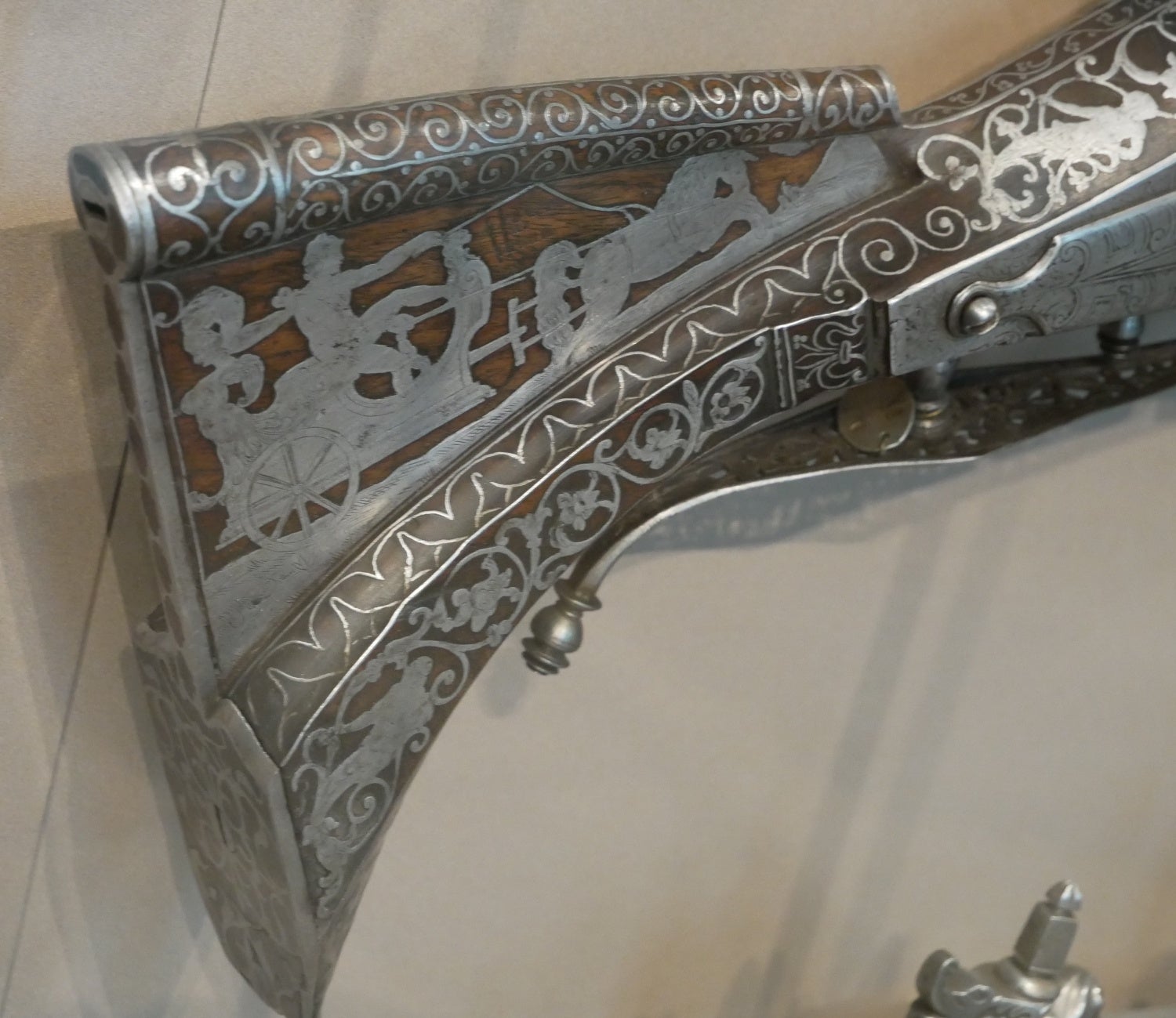
You won’t believe how small these miniature firearms are…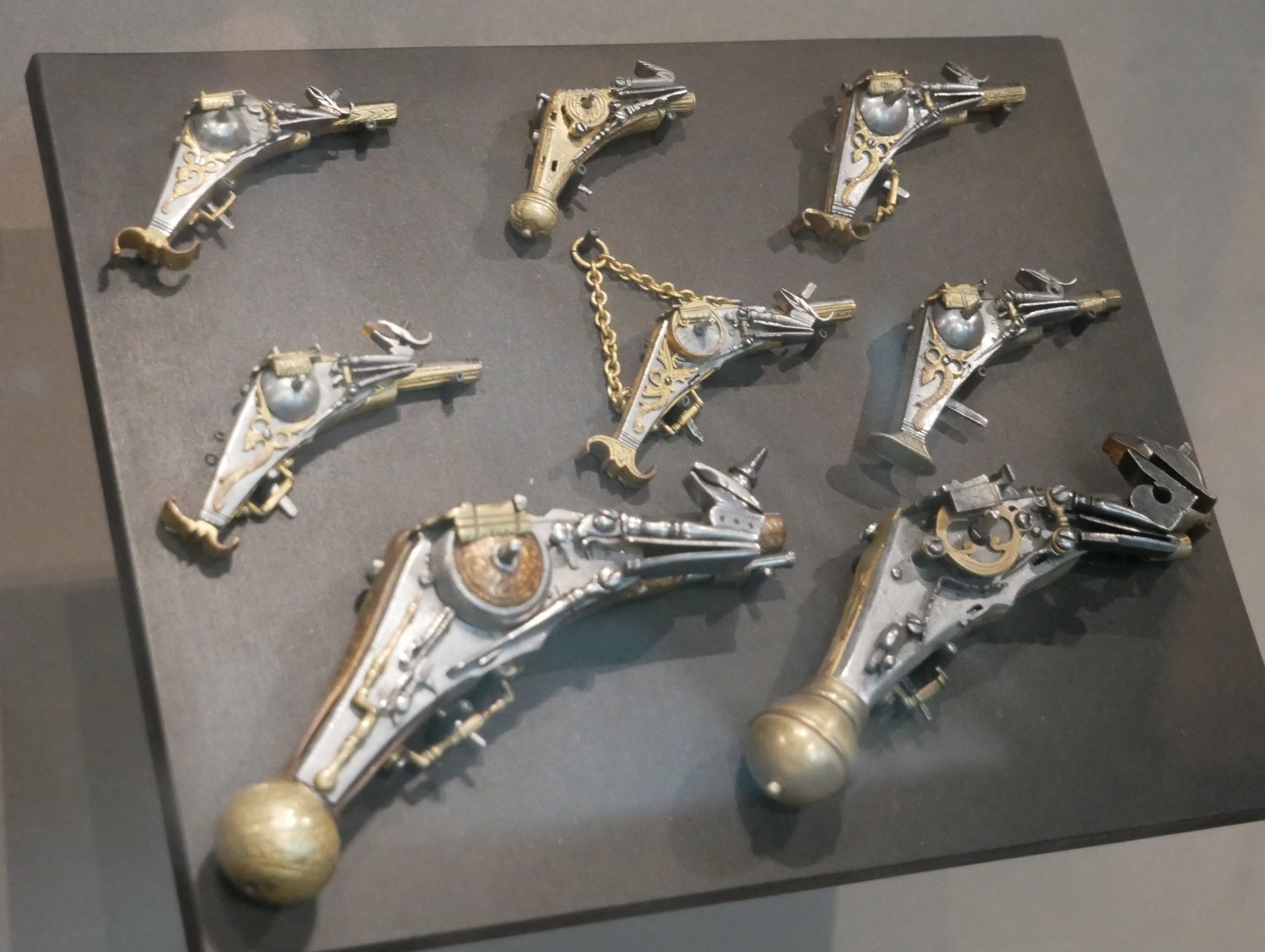
Until you see them in comparison to a “full-sized” wheellock. We tend to think of miniatures as a phenomena of the last several hundred years, but these go back almost five centuries to the dawn of firearms design. 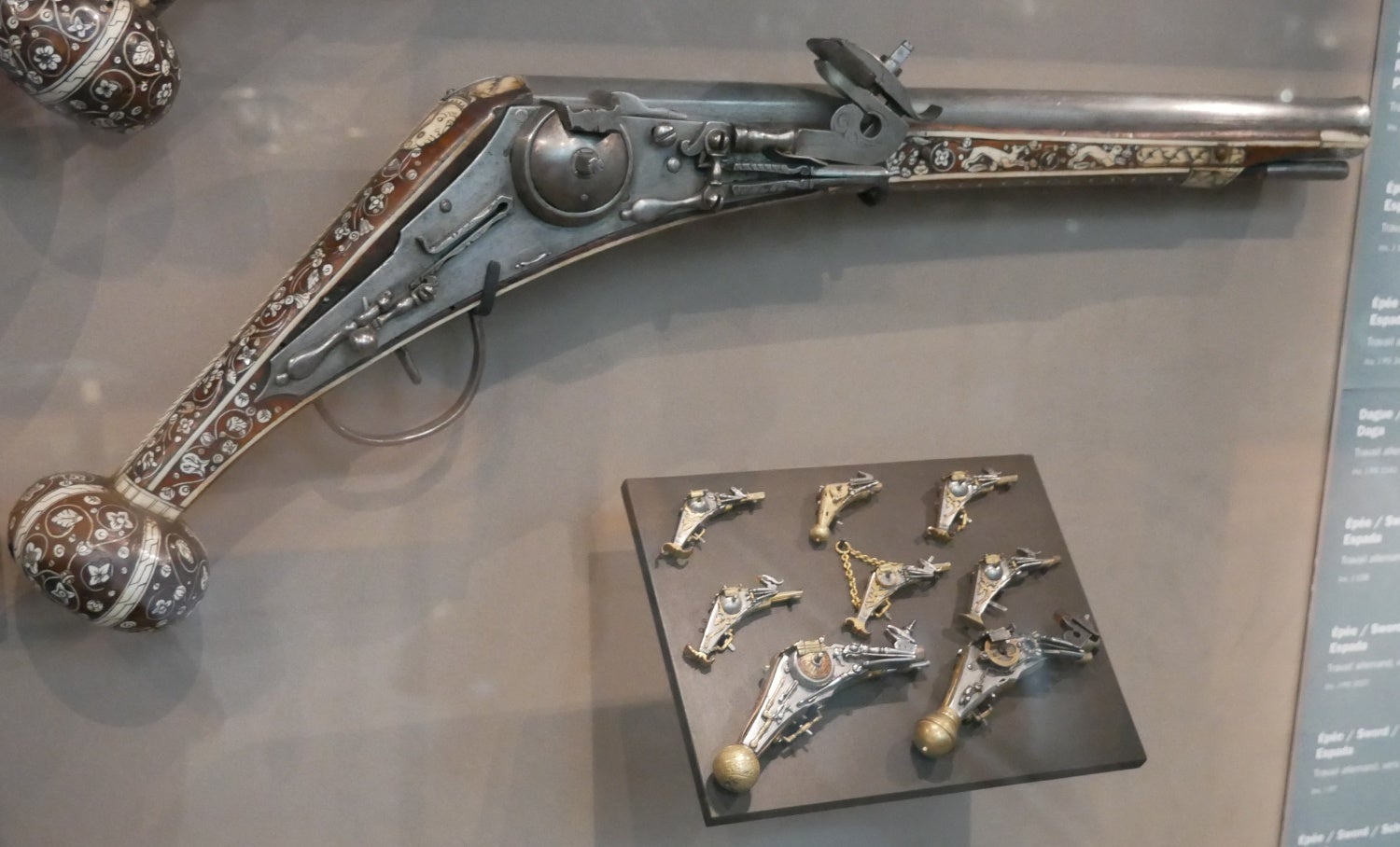
Between the curved pistol grips, we have this sort of transition period wherein the stocks are at a direct forty-five. It looks almost childlike or ludicrous until we realize that we are still arguing over things like grip angles with the 1911 or Glock derived designs of today.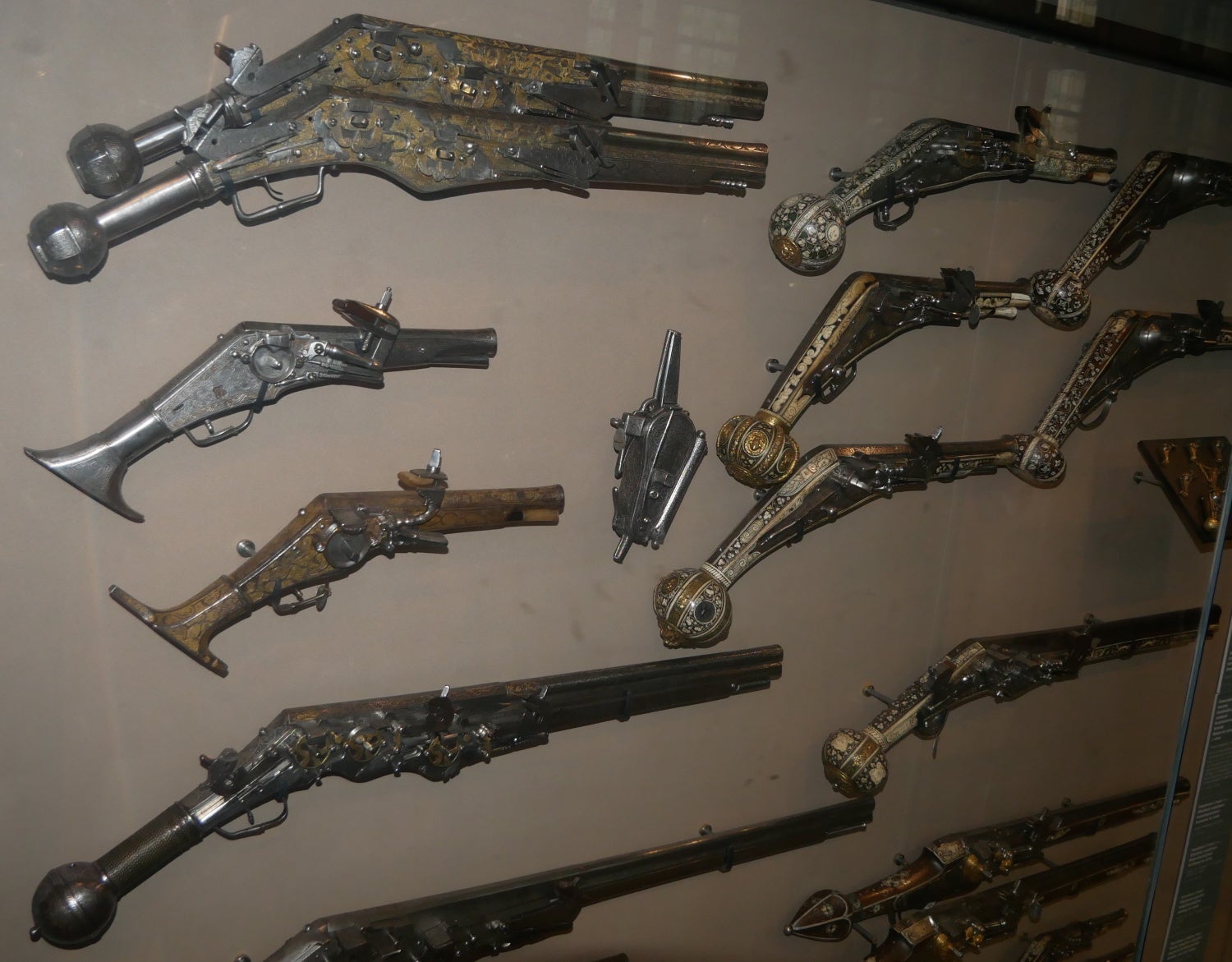
Notice the almost right angle of these handgun grips again. It would appear that these are much more ornamental than for actual combat. 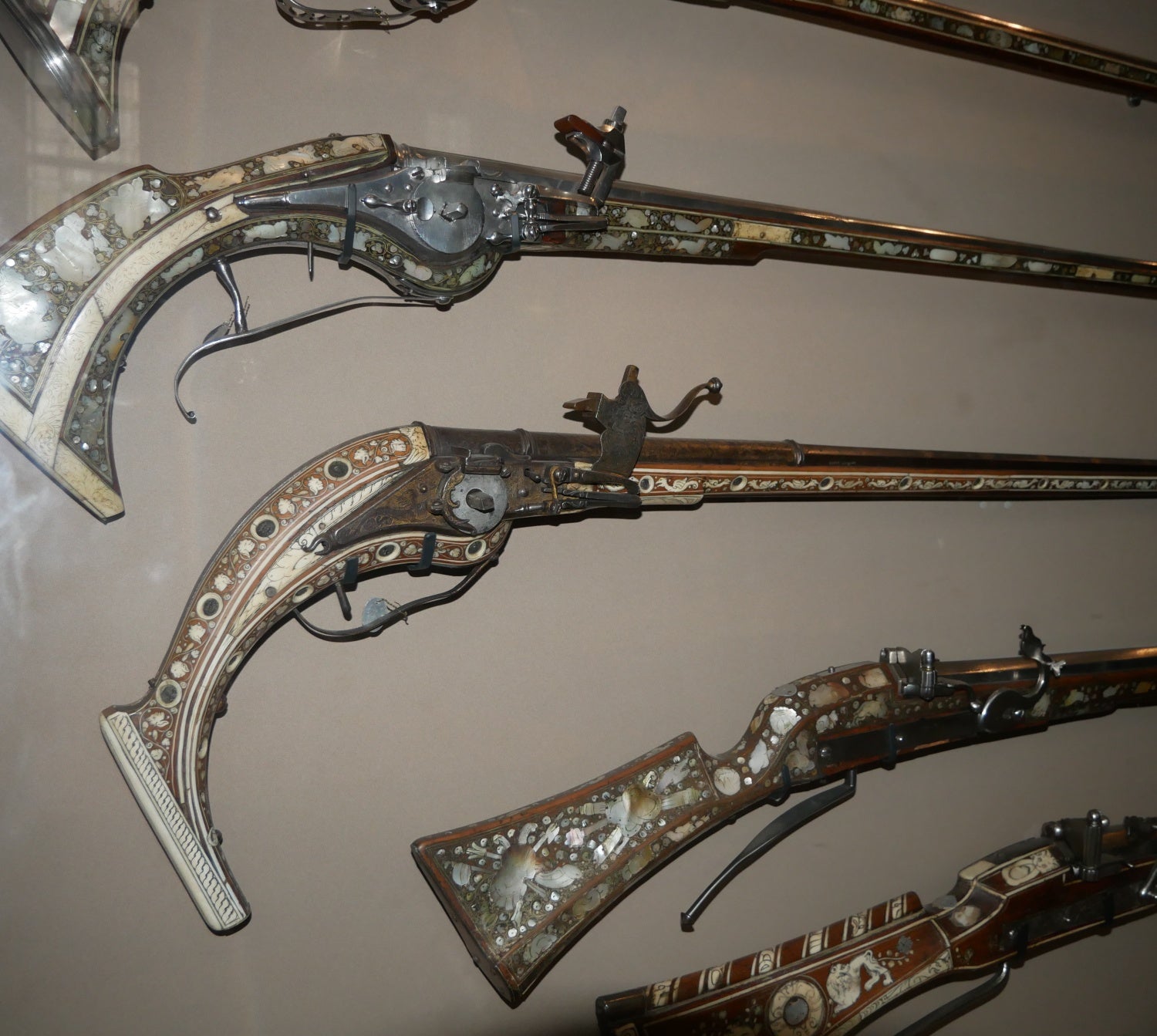
And here lies the final resting place of one of the finest battlefield commanders to have ever walked the earth… Emperor Napoleon Bonaparte.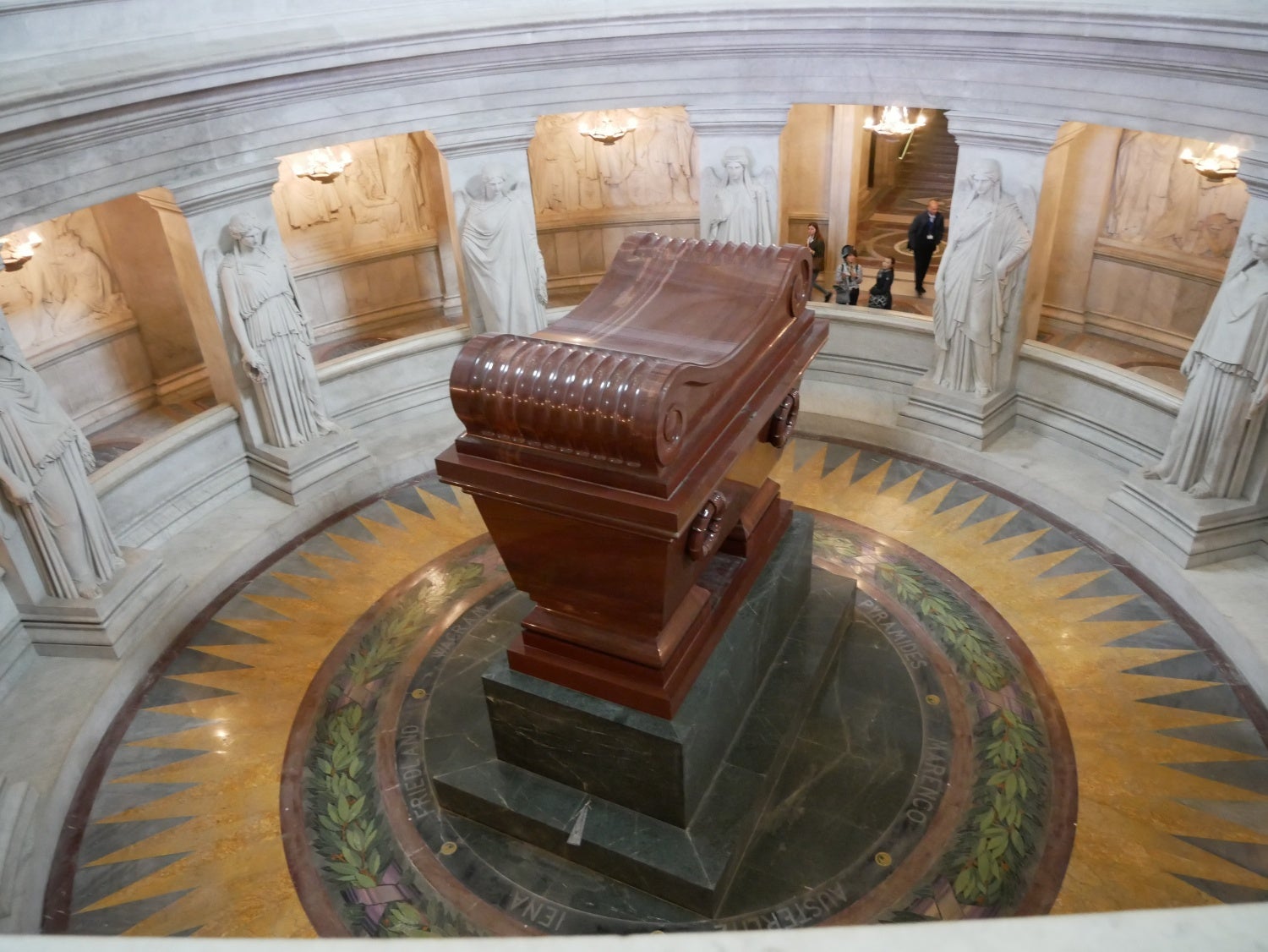
The Musée de l’Armée is open every day of the week from 10 PM to 5 PM, with the exception of certain holidays.
 Your Privacy Choices
Your Privacy Choices
